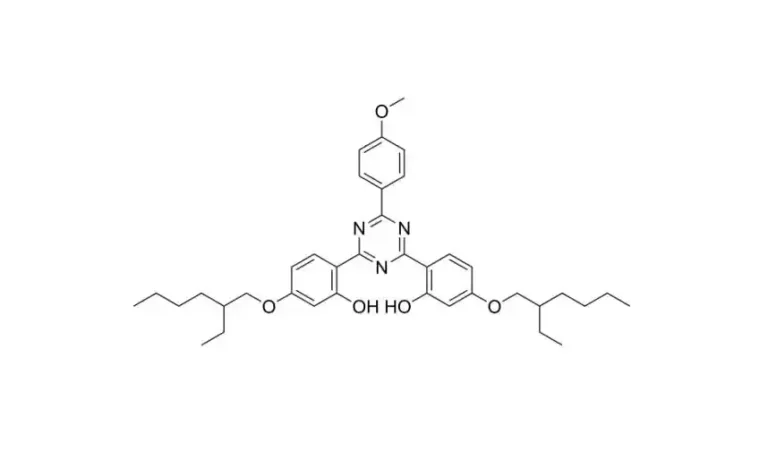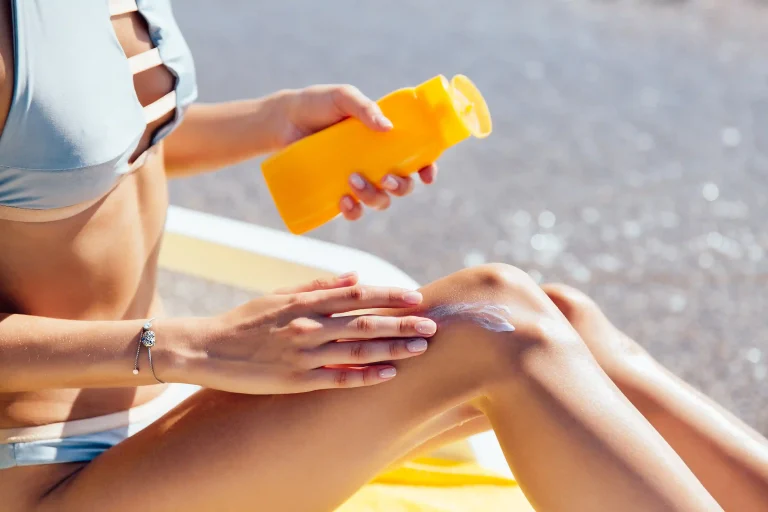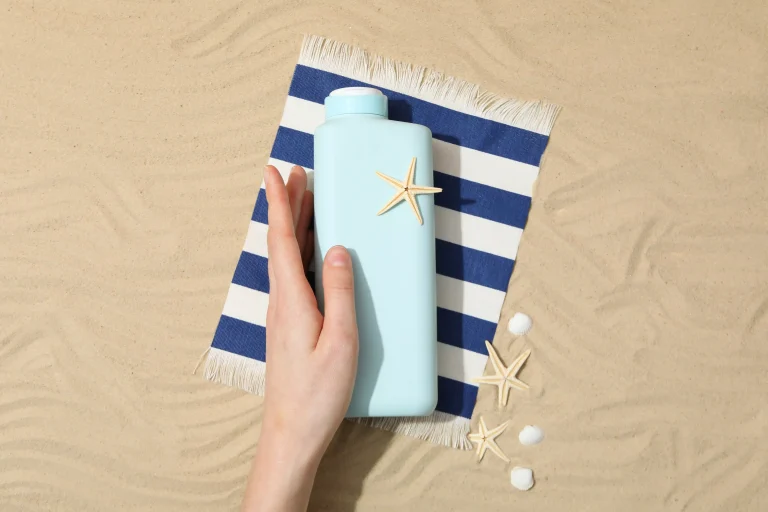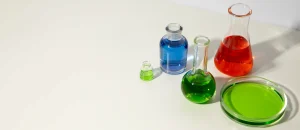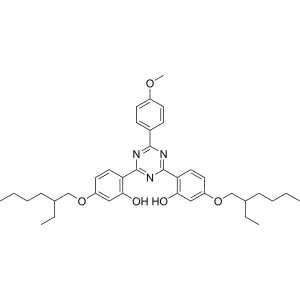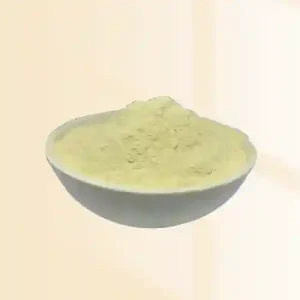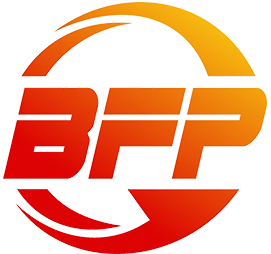Bemotrizinol serves as a component in sunscreens to shield against both UVA and UV rays effectively. This article highlights how its distinct characteristics bolster the durability and efficacy of sunscreens for prolonged protection from the sun’s harmful rays, showcasing why it is a vital ingredient in your sunscreen regimen.
Why is Bemotrizinol Essential in Sunscreen Formulation?
When creating sunscreens, it’s important to choose the UV filters for better protection from the sun’s rays. Bemotrizinol is a standout ingredient in formulas because of its special qualities and advantages. It greatly improves the effectiveness and durability of products and is considered a key element by those who develop these products.
The Role of Bemotrizinol in UV Protection
Bemotrizinol is widely recognized as an organic UV filter valued for its ability to protect against a wide range of harmful sun rays by absorbing both UVA and UV radiation effectively. Additionally, BFP-SP-S provides broad-spectrum protection against UVA and UV irradiation in an organic oil-based formula, making it a great option for sunscreens designed specifically for warding off sunburns and premature skin aging.
Benefits of Using Bemotrizinol in Sunscreens
Using Bemotrizinol in sunscreens offers benefits because of its outstanding ability to maintain effectiveness when exposed to sunlight for extended periods and its role in enhancing the performance of other UV filters in the formula by increasing their stability against light exposure.
Safety and Regulatory Status of Bemotrizinol
In creating sunscreens, ensuring safety is important. Bemotrizinol has been used extensively. It is deemed safe for inclusion in personal care items. It complies with UV protection standards globally, making it suitable for use in different locations with assurance. Its ability to work well with both organic and inorganic filters highlights its versatility and safety features in a range of formulations.
How to Formulate a DIY Mineral Sunscreen with Bemotrizinol?
Crafting a mineral sunscreen with Bemotrizinol requires delving into the details of choosing ingredients and mastering formulation methods meticulously to ensure the production of a sunscreen that provides strong protection against the sun’s rays.
Selecting the Right Ingredients for Your Sunscreen
To make a sunscreen that suits your needs and keeps you protected from the sun’s harmful rays, it’s crucial to choose the correct components carefully. If you decide to go for a mineral-based formula, consider including titanium dioxide or zinc oxide as barriers that reflect UV rays. BFP offers mineral UV filters available with both titanium dioxide and zinc oxide choices to meet your specific needs. By combining these with Bemotrizinol in the mix, you can ensure broad spectrum protection while maintaining stability effectively.
Step-by-Step Guide to Creating Your Sunscreen Formula
Let’s start creating your mineral sunscreen using Bemotrizinol.
- Measure precise quantities of zinc oxide or titanium dioxide.
- Incorporate Bemotrizinol into the mixture as an oil-soluble component.
- Blend thoroughly until achieving a homogeneous consistency.
- Adjust viscosity by adding emollients or thickeners if necessary.
- Ensure even dispersion by using high-shear mixing equipment.
By following these guidelines step by step, you can create a balanced method that gives you the best sun protection possible.
Testing and Adjusting Your Sunscreen Formula
Perform SPF tests in a controlled environment to make sure that the level of protection meets expectations. If there are any changes needed at this stage, think about adjusting the ratios of ingredients or adding more stabilizers to improve performance without affecting the overall texture or feel.
What are the Common Challenges in DIY Sunscreen Formulation?
Formulating sunscreens at home presents unique challenges that require careful consideration and problem-solving skills.
Stability Issues in Homemade Sunscreens
A frequent issue encountered by DIY creators of formulations is ensuring that their products maintain stability over time successfully. Factors like how ingredients interact with each other and how they are affected by changes in temperature and exposure to light can have an impact on stability if not managed carefully during the formulation process.
Achieving Desired SPF Levels
Achieving SPF levels necessitates careful selection of active ingredients like Bemotrizinol in combination with other UV filters such as Ethylhexyl Triazone (UVINUL T 150), recognized for its excellent absorption capabilities, boasting an absorbance of more than 1500 at 314 nm. Maintaining a blend of these elements guarantees efficient sun protection while adhering to regulatory standards.
To tackle these obstacles from the start and apply strategies at every development phase, starting from choosing ingredients to conducting tests. You can enhance your ability to craft top-notch homemade mineral sunscreens with Bemotrizinol. This will effectively shield against sun rays without sacrificing quality or safety standards.
How Can BFP Serve as a Reliable Supplier for Bemotrizinol?
When looking for ingredients to make blends, it’s crucial to prioritize reliability and high standards of quality. Shanghai BFP New Material Co., Ltd. is recognized for being a provider of Bemotrizinol, providing a variety of options designed specifically for the sun protection and beauty sectors.
Overview of BFP’s Product Quality Standards
The reputation of BFP is built on its dedication to maintaining top-notch quality standards in producing goods for the market. They specialize in creating a variety of products that cater to the aging sector within the sun care and beauty industries. Offerings range from natural UV filters like Bemotrizinol to mineral-based formulations using titanium dioxide and zinc oxide. Their broad selection showcases BFPs’ commitment to meeting a wide array of formulation requirements with accuracy and reliability.
Customer Support and Technical Assistance from BFP
In addition to producing top-notch products, BFP stands out for its customer service and technical support. They grasp the challenges associated with creating sunscreen and provide expert advice to guarantee product creation. Whether it’s deciding on the UV filters or enhancing formulations, BFP experts offer personalized suggestions to meet your unique needs, enabling you to successfully navigate the complexities of making your mineral-based sunscreen.
FAQs on DIY Mineral Sunscreen with Bemotrizinol
When creating a mineral sunscreen containing Bemotrizinol, it may lead to inquiries about replacing ingredients, safety precautions, and how to use it properly.
Can I Substitute Other UV Filters for Bemotrizinol?
When looking to swap out UV filters in your product mixtures, it’s crucial to think about how effective they are and whether they work well with the other components in the formula. Bemotrizinol is recognized for its ability to offer wide-ranging protection against the sun, which is why it’s a top pick for thorough sun shielding purposes. If you’re considering a switch, make sure that the replacement filters offer comparable levels of protection against both UVA and UVB rays while also staying stable within the overall formula.
How Do I Ensure My Homemade Sunscreen is Safe for Use?
Safety when creating your sunscreen products requires selecting ingredients thoughtfully, measuring accurately, and testing rigorously for quality assurance. Perform SPF assessments in a controlled environment to confirm efficacy. Moreover, assess skin sensitivities by conducting patch tests for widespread application. The product complies with UV protection standards globally, guaranteeing that when prepared accurately, it meets safety regulations in different areas.
What is the Recommended Usage Frequency for DIY Mineral Sunscreens?
The frequency of application varies based on factors like how strong the sun is shining and how active you are outdoors. Typically, reapply every two hours or right after swimming or sweating a lot to keep your skin protected from UV rays all day long.
Conclusion
When making your mineral sunscreen using Bemotrizinol, it’s crucial to grasp the properties of the ingredients and the methods for creating it to ensure sun protection that works well. By relying on trusted suppliers, like Shanghai BFP New Material Co., Ltd., you can get top-notch materials with expert advice to help you develop sunscreens that are both safe and effective for your specific requirements while meeting industry norms!

